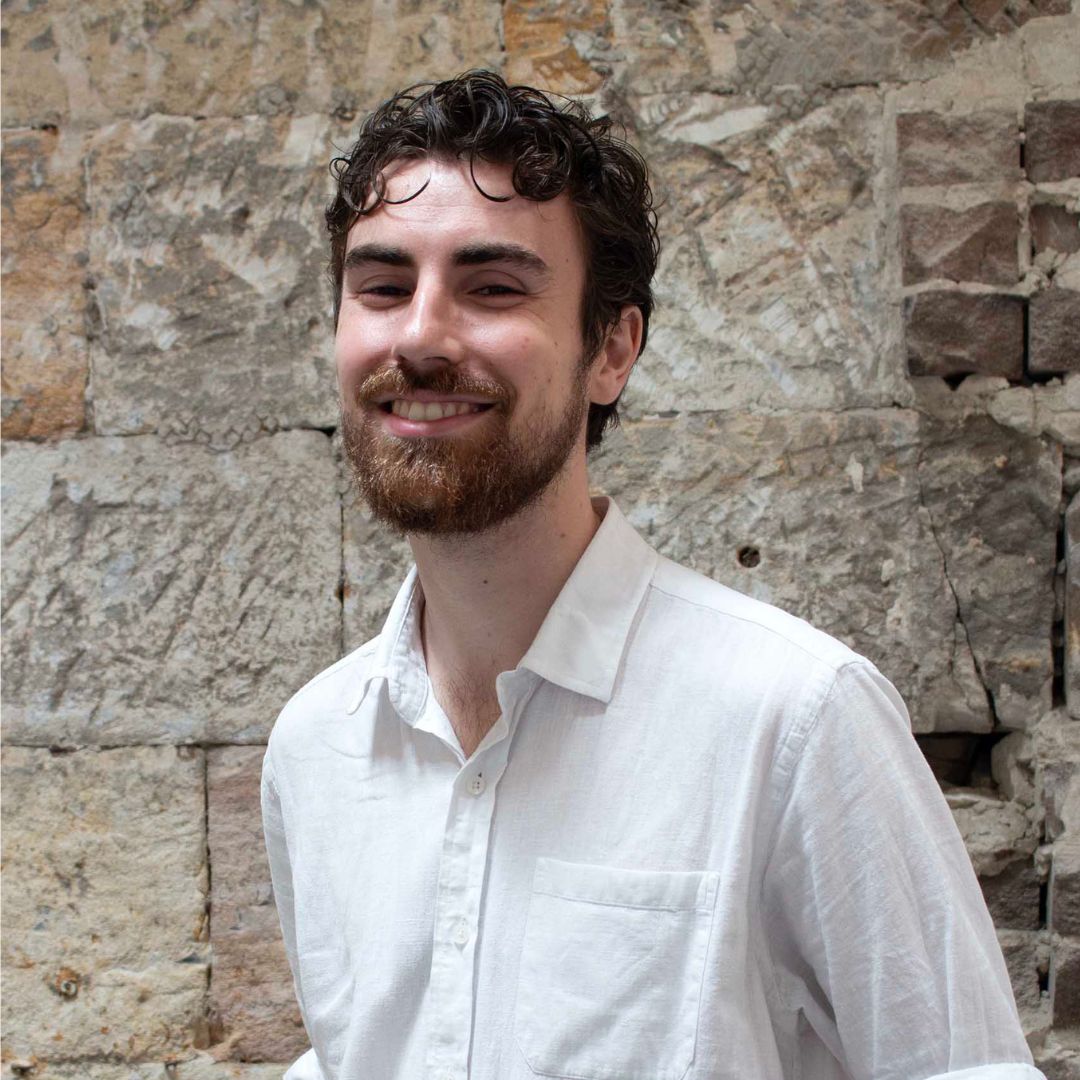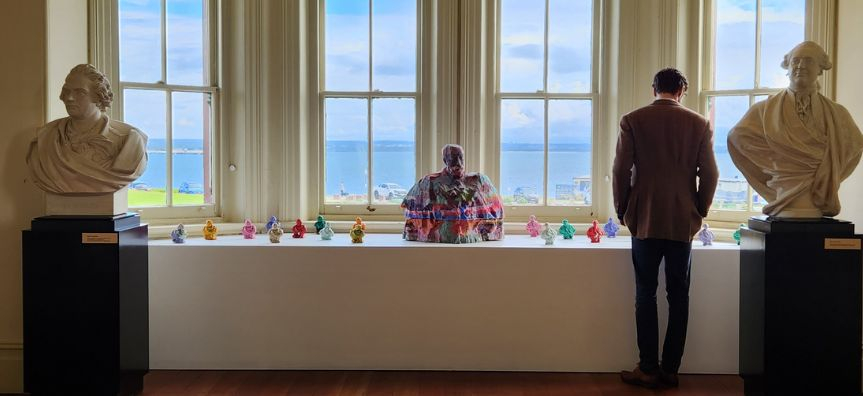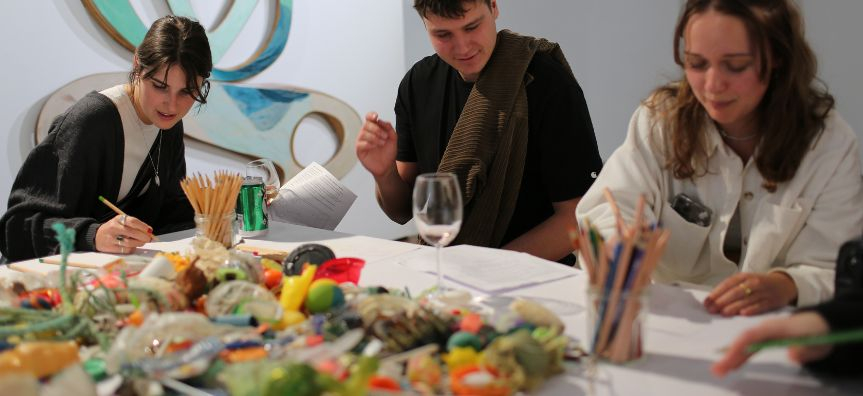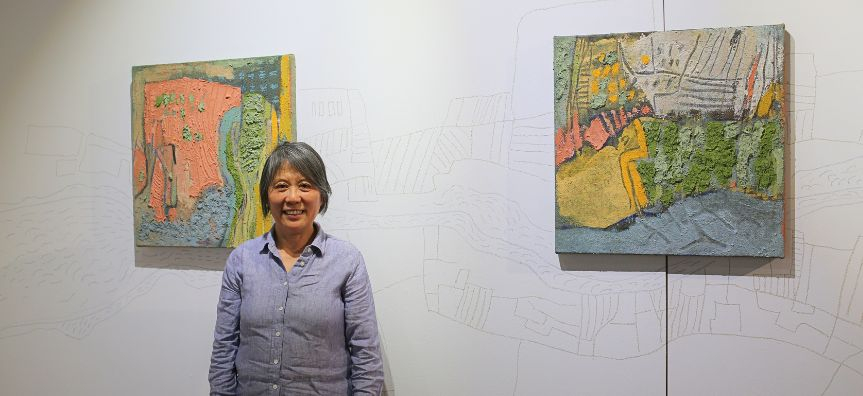
Sculptor and curator Daniel Press is known for his innovative approach to sculpture and commitment to uncovering emerging trends in Australian contemporary art. As a participant in the Emerging Curator Program, he developed MASS, an ambitious exhibition and public program at Curl Curl Creative Space.
MASS presented a thought-provoking exploration of the environmental histories of Curl Curl, responding to the pressing realities of our climate crisis. The exhibition showcased collaborative works from eight female-identifying artists, delving into themes of ecofeminism, transformation, and place-making.
Daniel will be speaking at the upcoming event, Creatives Connect: Conversations with Curators. Please join him for this industry event on Thursday 23 January at Manly Art Gallery & Museum. Part of Sydney Festival's Art Up Late series.
What interests you about curating? As a practicing artist yourself, do you remember a moment when you shifted from wanting to make art to also curate it?
Curating came naturally to me. In 2022, I began the HDR Studio Crits program with Kristy Gordon between UNSW, National Arts School (NAS), and Sydney College of the Arts (SCA) where I noticed emerging patterns between creative cohorts. I was drawn to curating because I wanted to celebrate these links and continue to foster creative communities.
I was later invited to be part of the DRAW Space team. It was a real palette cleanser from my sculptural PhD practice. Ultimately, curating allowed me to bring a bit of fun to my creative output and let me focus on topics that exceeded the boundaries of my PhD.
For MASS (2024), you asked each artist to respond to the costal suburb of Curl Curl. Each artist brought their own perspective, from historical references of Chinese market gardens, to concern about chemicals used for environmental management, and expressing the sensation of swimming in salt water.
As a local, what does living in a coastal suburb mean to you? What histories, issues, or sensations do you relate to living in this area?
As I local, I learned how important it is to protect our wetlands in coastal suburbs. Art has great demonstrative power to bring awareness to environmental causes. My own personal connection to Curl Curl was the sports games I’d attend in the parklands growing up.
By researching a location like the waterway than runs from Greendale Creek to Curl Curl Lagoon and out to the ocean, I was able to see how environmental transformations are layered over time. Many of these histories were not well known, but important to the understanding of the site. Emma Pinsent responded poetically to the history of sandmining between the 1920s to as late as post-WW2, where the sands near Curl Curl Lagoon were mined for its high silica content well suited to the manufacture of glass. Meanwhile, Mei Zhao reflected on the former Chinese Market Gardens that ran along Greendale Creek and Chrystal Rimmer made casts that responded to the disappearance of flannel flowers in the area. Each artist brought a deeper understanding to the site.
MASS is the third in a trilogy. Can you describe how this series of exhibitions unfolded, and did MASS resolve the questions you started with?
MATERIALITY (2023) was the first group exhibition for DRAW Space, and came about as a statement that DRAW Space would expand understandings of drawing. Spending much of 2022 visiting the studios of so many artists from the HDR Crits made me very aware of the trends in ecological mark-making practices. From there, it was a very organic discussion of ideas and a process of workshopping to see the ways each practice entangled with one another.
I think the important aspect of the exhibitions was fostering a creative cohort working together - why stop at one exhibition? What I found exciting about developing sequel shows, which cumulated in MASS, is how each artist has grown together.
MASS was an important step forward because it was the first time each artist responded to the same site. We went on walks around Curl Curl and found so many environmental and historical facets to draw from. Each artist has shared knowledge and feedback with one another, and the result was a cohesive picture of what Curl Curl is and what it could be.
During the development of MASS, as part of the Emerging Curator Program, you met with the curators from Manly Art Gallery & Museum (MAG&M).
What are your biggest takeaways from these mentorship sessions that you’d share with other emerging curators?
I sat down with the staff at MAG&M where I was given valuable insight into the local government demographics, interests, and initiatives. All of this was helpful in making an exhibition that really connected to the residents of Curl Curl.
I was also able to gleam insights into what aspects of Curl Curl Creative Space could be emphasised, like the steel roof frames where Emma Pinsent installed glass panels, or the configurations of the movable wall panels. The gallery is very malleable with rustic, tin roofed qualities and is surrounded by gardens. I think these aspects offer fruitful areas to respond to. There is lots of scope for emerging curators to respond to nature, which is so present in the site.
You’ve said that you’ve been in a long-term dialogue with the artists who appeared in MASS, having worked with them on a number of exhibitions and initiatives.
What does this type of community mean for you? How do these networked relationships impact your creative work?
I think the aim of curating is to bring artists together in a way that expands the potential of their given practice. In a way, it carried on the development process of the HDR Crits, and we have all gotten tips, advice, and support from one another. I have certainly expanded my knowledge of casting.
I think art is the challenge to refine an idea in the purest material presentation and visual expression. Curating unlocks that perspective to further refine ideas. Whenever I return to my own practice, I’m able to make greater leaps in my visual expression from engaging more closely to the language of ideas.
You recently completed a PhD which broadly looked at our shifting relationships to British colonial monuments in Australia. You created a series of artworks through this research that recently exhibited at Woollahra Gallery and La Perouse Museum, titled Send-Off (2023 – 2024).
How did the in-depth research of a PhD shift your art and/or curatorial practice? From your experience, what does a PhD provide for practicing artists?
By doing in-depth research in the field of counter-monuments, it fast-tracked the way I’m able to attain a cohesive understanding of other fields in art. In the instance of ecological mark-making, the practice is an emergent one where boundaries are still being defined on what it means to make expanded drawings that are very sensitive to ecology.
Being a practicing artist adds depth into the way I bring artists together. It often means my curatorial approach is more practice-led than one based on firm theoretical underpinnings. Since exiting the program, I’d say the PhD has helped me define more profoundly what trends have been emerging from this collaborative process, and really celebrate the unique statements made as result.
As an artist, the PhD provided me with time to sit with ideas and provided me the mentorship and guidance to further develop them.
In 2022 you co-founded the award-winning initiative HDR Studio Crits, a series for artists to share their work and provide thoughtful feedback to each other. Considering artists often have solo practices, these sound invaluable!
With your experience hosting these gatherings, what is the key to constructive feedback when looking at an artist’s work? How do you approach a critique?
Kristy Gordon and I started the program in 2022 to bring our HDR cohort together after the rupture of the pandemic. We identified a need for artists in the university sphere to broaden their range of cross-institution interactions and to strengthen their art-making practices. Since then, Sarah Eddowes has joined as co-organiser, and the Crits have regularly toured UNSW, NAS, and SCA.
The structure has a 5-minute “cold read”, a 5-minute explanation for the artist, and an additional 5 minutes to workshop the artwork in a nurturing and productive way. With cold reads, we look at the work for what it is without wall text or an explanation. From this, you can get a closer reading of what the average viewer is taking in. Processes like these are invaluable to understand what you are communicating.
So far, it has had 21 sessions and over 60 presenters. It has been profoundly meaningful to me that the success has led other students to continue the legacy of the program beyond my graduation. It is on the last Friday of every month at 3pm, and I encourage anyone looking to develop their practice to reach out and come along!
In 2023 you co-founded DRAW Space Gallery, an Artist-Run-Initiative that provides space and opportunities for artists who ‘draw’, with a broad definition of what drawing is.
Can you explain how broadly you interpret the idea of drawing? And, particularly as you’re known as a sculptor, why did you become involved in a drawing initiative?
I was invited to co-found DRAW Space largely due to my insight into emerging practice through the HDR Studio Crits. While I am not a drawer myself, as Deanna Petherbridge argues, drawing is the first among equals when related to mediums such as painting, sculpture, and printmaking. The foundational language of drawing – such as sketch, line, depth, and layering – runs as an undercurrent between mediums, and closely aligns to the generation of ideas.
For example, I curated Fabrication (2024) with Sarah Eddowes in May this year. Part of that exhibition reconciled with how the foundational language of drawing appears in the potential of digital fabrication. As a sculptor who produces 3D printed objects, I found my practice co-related to these expanded notions of drawing from the “point-cloud” that defines the initial 3D scans to the 3D printed grooves from layered material.
Many of the exhibitions I curated at DRAW Space exceed the realms of my practice, though, and let me examine how textas, dance, and ecologically-conscious practices exhibit unique expressions of drawing practice. Through my curation of group shows and performances, I have worked to create opportunities for emerging artists.
We have a brilliant team at DRAW Space! Already 18 months into the operation of our ARI (Artist Run Initiative), we have been advocating for critical support for drawing as an often overlooked medium in Australia. Inspired by the Drawing Center in New York and the Drawing Room in London, DRAW Space ambitiously wants to put Australian drawing practice on the map. A big part of that is cultivating emerging practices while providing experimental opportunities for mid-career artists. With visionary programs like the International Performance Drawing Series, the DRAW Store by Belinda Yee, and the backbone of our operation, Melinda Hunt, developing walking-while-drawing initiatives, we have brought more attention to the exciting happenings in drawing. There have been many more energetic outputs from our expansive board, and we try to learn new skills while playing to each other’s strengths.
Further, do you have any tips for anyone interested in starting an ARI, or building a community of practice like this?
My main tip for starting a dynamic creative initiative is to locate a gap or an appetite missing in your local contemporary art scene. From there, it is a matter of finding other passionate advocates with whom you can work, developing a vision for your initiative, and creating procedures and plans that are clear and efficient.
Read more about DRAW Space online at drawspace.org and follow us on Instagram for all the news!
You’ve had a big year! We believe that on top of MASS, you’ve had at least one curatorial output every month this year.
Where to next for you? What’s the big-picture goal? And where can people next see your work as an artist or curator?
I have been busy this year on a largely freelance basis. Part of that has been the balancing varied demands. Each institution and group of artists is different.
The next step curatorially is to bring some of these exhibitions on the road. I’ve found a really engaged team with DRAW Space, and we’re looking to expand many of the group exhibitions and performances we’ve developed into “packets” for touring exhibitions.
In my own practice, I have been struck by the gargoyles and grotesques around the Quadrangle Building at Sydney University. There’s something about their presence in relation to the Australian Gothic and the material qualities of sandstone I want to examine. For a sneak peak, see some of the sculptures I made in collaboration with Sarah Eddowes for our Exquisite Corpse (2024) duo exhibition at Puzzle Art Garage.
My big-picture goal is to find a way to support emerging artists at the difficult cusp of leaving the nexus of art school. I have some ideas in the works, but you’ll have to wait in see how they materialise.




